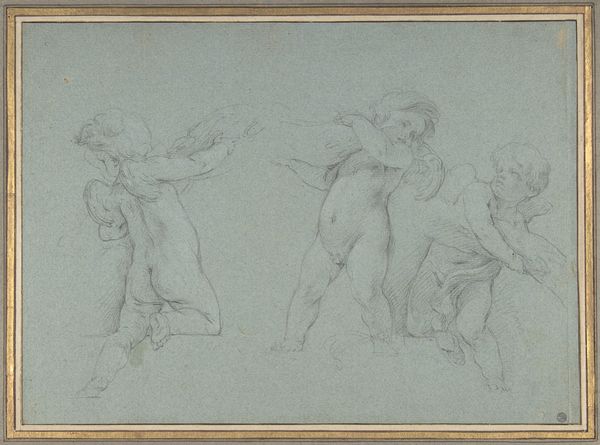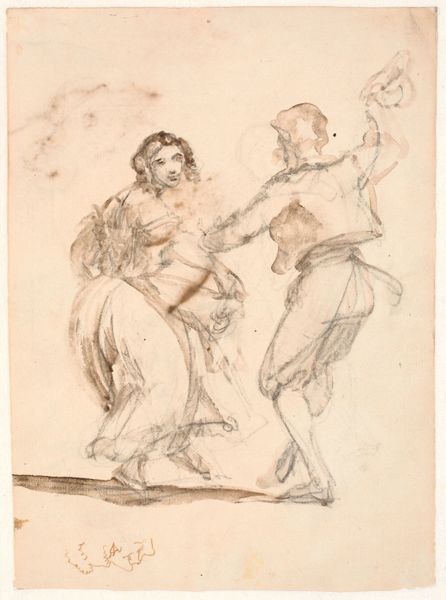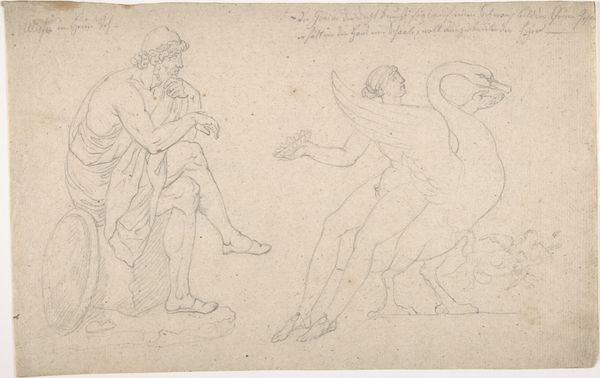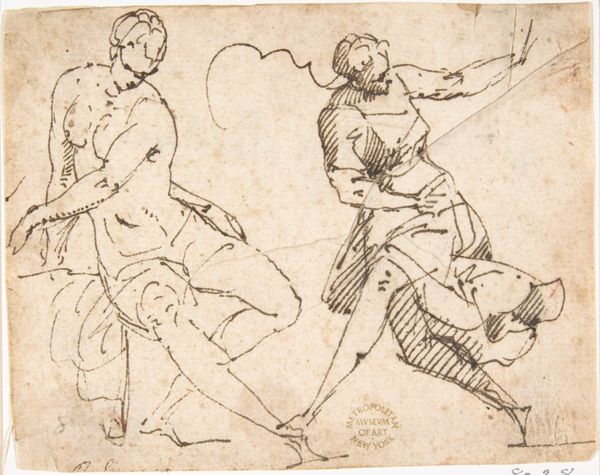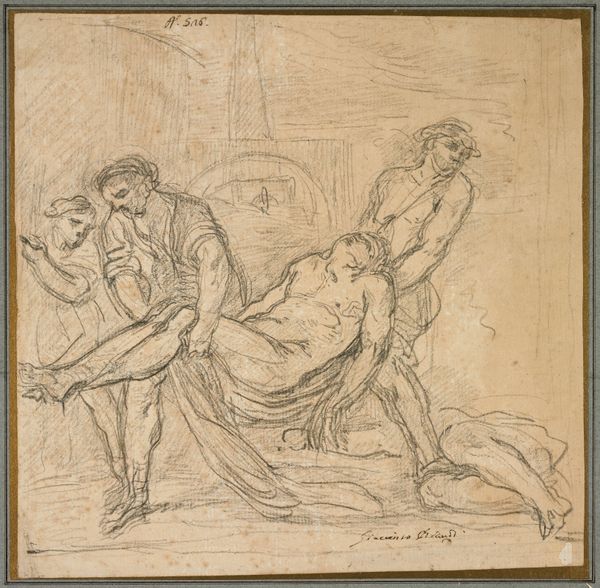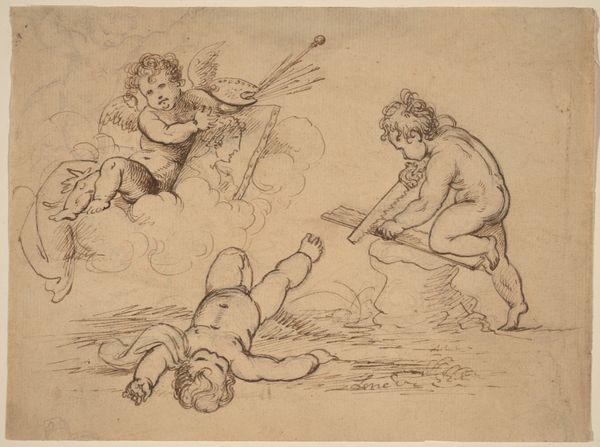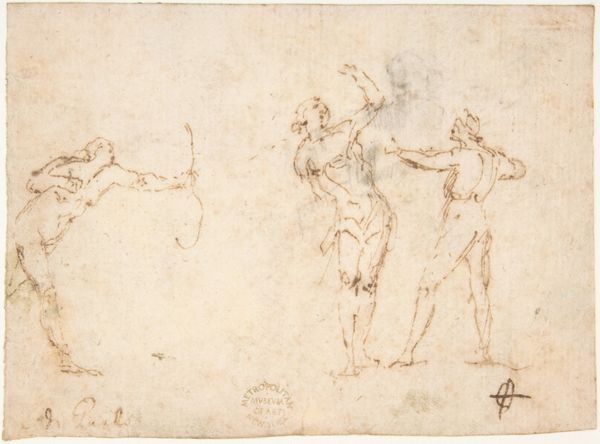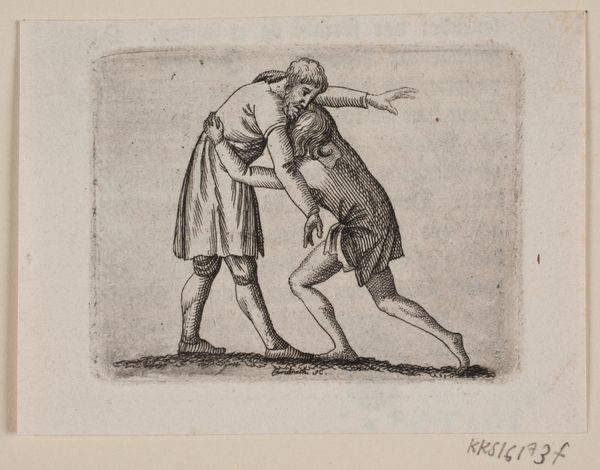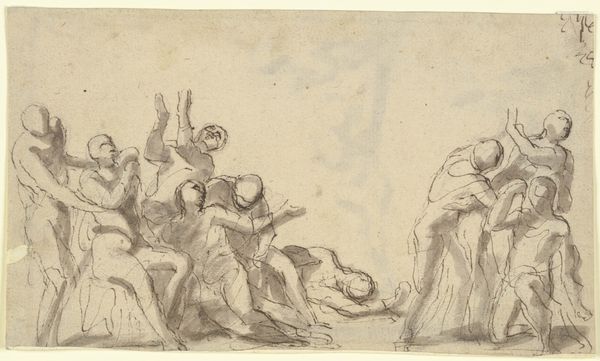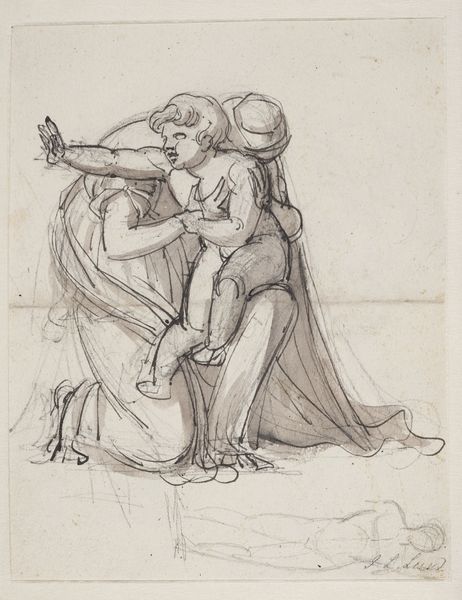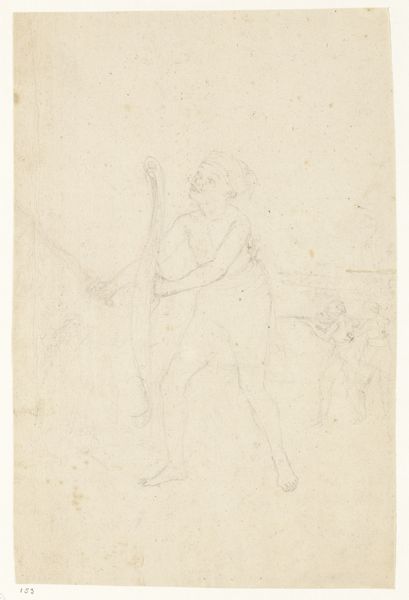
drawing, pencil
#
drawing
#
amateur sketch
#
imaginative character sketch
#
light pencil work
#
pencil sketch
#
figuration
#
personal sketchbook
#
idea generation sketch
#
pencil drawing
#
detailed observational sketch
#
pencil
#
portrait drawing
#
pencil work
#
genre-painting
Dimensions: height 138 mm, width 170 mm
Copyright: Rijks Museum: Open Domain
Curator: This is a piece called "Twee studies van twee vechtende mannen"—Two Studies of Two Fighting Men—a pencil drawing by Barend Cornelis Koekkoek, dating from between 1813 and 1862. It resides here at the Rijksmuseum. Editor: My first impression is one of raw, masculine energy. It is sketch-like and incomplete but full of latent aggression. I find myself wondering, why depict men fighting? What is the message? Curator: I'm drawn to how Koekkoek uses the visual language of conflict, of two men fighting to depict the performance of masculinity during a fraught era. The image presents interesting questions about class and physicality. Editor: Interesting that you say that, as there are so many symbols within the stance of these men. A lot of cultural information comes through from the clothes, from how the scene is presented. They almost look like figures from Greek or Roman friezes. Is Koekkoek linking their contemporary fighting men to the fighters of the past? Curator: Perhaps he saw a connection—it would not be unusual in his day to want to depict something ordinary such as common street violence but also portray the historical and perceived romanticism of battle through similar postures, so yes, a contemporary take on classicism. But the question I'd put forward, is whether there is an implication of a more personal interpretation as well. Do such portrayals somehow reinforce already existing societal gender roles? Is it in some way complicit with a conservative tradition? Editor: I take your point. Violence is almost a symbolic language. The contrast between their struggle and its loose almost unfinished quality reinforces that sense. In truth it brings new light and a kind of honesty that wouldn't necessarily exist otherwise. I was curious at first and suspicious of glorification, but, I must concede I see something of greater artistic integrity upon further reflection. Curator: It does provide layers, doesn't it? An artifact of cultural symbolism in action. It makes me question what I project upon seeing these fighters too. Editor: I agree. Thinking about art's role, what it portrays, and how the viewer interprets it, that is key isn't it?
Comments
No comments
Be the first to comment and join the conversation on the ultimate creative platform.
